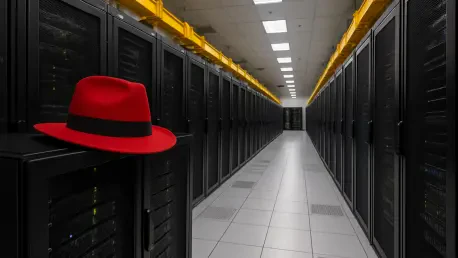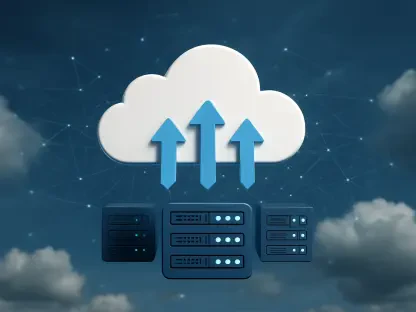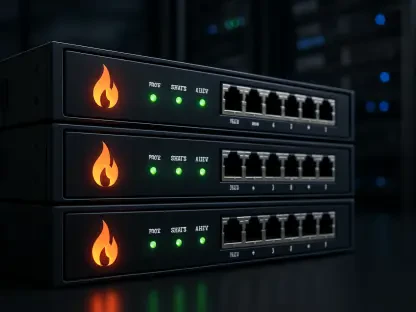In an era where technology continues to push the boundaries of human capability, a remarkable milestone has been achieved with the deployment of the AxDCU-1, a prototype data center, to the International Space Station (ISS) through a collaboration between Axiom Space and Red Hat. This innovative project, ferried to orbit on a recent SpaceX mission, positions data processing infrastructure 400 kilometers above Earth, heralding a new chapter in edge computing. The initiative seeks to address the persistent challenge of latency in space missions by enabling real-time data analysis directly in orbit, a feat that could transform how data is managed beyond Earth’s atmosphere. With the potential to support autonomous missions to distant celestial bodies like the Moon and Mars, as well as critical applications such as telemedicine for astronauts, AxDCU-1 represents a bold step forward. This development not only showcases technical prowess but also underscores the growing role of private entities in shaping the future of space exploration.
Edge Computing in Orbit
Pioneering Data Processing in Space
The concept of edge computing, which focuses on processing data closer to its source to reduce delays and bandwidth demands, takes on a revolutionary dimension with the AxDCU-1 deployment to the ISS. Unlike traditional methods that rely on transmitting vast amounts of raw data back to Earth for analysis—a process plagued by latency and limited communication windows—this orbital data center handles data locally. By refining information in space and sending only essential results to ground stations, the system minimizes bottlenecks. This capability is particularly vital for time-sensitive tasks such as monitoring spacecraft systems or conducting real-time scientific experiments. Early testing in low Earth orbit is already demonstrating the potential to enhance mission efficiency, offering a glimpse into a future where space-based operations no longer depend heavily on terrestrial infrastructure. The implications extend beyond immediate mission needs, promising to redefine how data-intensive activities are conducted in extraterrestrial environments.
Another significant aspect of this pioneering effort lies in its ability to support a wide array of applications crucial for future space endeavors. From enabling AI-driven tasks like image analysis to interpreting complex sensor data directly in orbit, AxDCU-1 addresses challenges that have long hindered space exploration. This shift toward localized processing could prove instrumental in scenarios requiring immediate decision-making, such as autonomous navigation for spacecraft or emergency medical diagnostics for crew members far from Earth. The technology also holds promise for industries on the ground, including telecommunications and defense, by providing a model for ultra-low-latency data handling. As testing progresses, the insights gained from this prototype are expected to inform the design of more advanced systems, potentially paving the way for a network of orbital data hubs. This marks a critical turning point, positioning space as the next frontier for computational innovation.
Technological Innovation
At the heart of AxDCU-1’s functionality is Red Hat’s Device Edge technology, a robust platform designed to ensure scalability and resilience even in the unforgiving conditions of space. This open-source software, paired with hybrid cloud applications, allows the data center to adapt dynamically to varying workloads while maintaining operational stability. The system’s architecture is built to withstand the unique stresses of orbit, including sudden temperature shifts and the absence of traditional cooling mechanisms. By leveraging enterprise-standard solutions, the project demonstrates that terrestrial computing frameworks can be adapted for extraterrestrial use with remarkable effectiveness. Initial reports from the ISS indicate that the prototype is performing admirably under simulated high-stakes scenarios, suggesting that such technology could become a cornerstone of future space missions. This achievement highlights the importance of cross-industry collaboration in solving complex challenges beyond Earth.
Further enhancing the significance of this technological breakthrough is the focus on creating a flexible and future-proof infrastructure. The integration of Red Hat’s solutions into AxDCU-1 not only ensures compatibility with a diverse range of applications but also positions the system to evolve alongside emerging needs in space exploration. This adaptability is crucial as missions become more ambitious, requiring data processing capabilities for tasks like in-space manufacturing or remote sensing for planetary defense. The project builds on previous experiments conducted on the ISS, taking a more comprehensive approach by combining hardware and software into a cohesive unit. This holistic design is key to addressing the scalability demands of commercial space ventures, which are expected to grow exponentially in the coming years. As a result, AxDCU-1 serves as a blueprint for how cutting-edge technology can bridge the gap between Earth-bound systems and the vast potential of orbital computing.
Challenges of Space-Based Infrastructure
Adapting to Harsh Conditions
Deploying a data center like AxDCU-1 in low Earth orbit introduces a host of environmental challenges that terrestrial systems rarely encounter, with cosmic radiation posing a particularly severe threat to electronic components. This high-energy radiation can disrupt data integrity and hardware functionality, necessitating specialized shielding and error-correction protocols to protect the system. Additionally, microgravity affects hardware design by altering heat dissipation and mechanical stability, while limited power availability—reliant on solar arrays—demands ultra-efficient energy consumption. Addressing these hurdles requires innovative engineering solutions, such as radiation-hardened processors and advanced thermal management techniques. The ongoing tests on the ISS are critical for identifying weaknesses in these adaptations, providing data that will refine future iterations. Successfully navigating these conditions is essential for ensuring that space-based computing can become a reliable pillar of modern exploration.
Beyond radiation and microgravity, the logistical complexities of maintaining a data center in orbit add another layer of difficulty to the project. Unlike Earth-based facilities where repairs and upgrades can be conducted with relative ease, any malfunction in space requires either remote troubleshooting or costly intervention missions. Power constraints further complicate operations, as energy must be carefully rationed to balance data processing needs with other critical ISS functions. These environmental and operational challenges underscore the experimental nature of AxDCU-1, which serves as a testbed for determining how much terrestrial technology can be adapted without bespoke, prohibitively expensive designs. The lessons learned from this initiative will be invaluable for developing sustainable and resilient infrastructure, ensuring that future orbital data centers can operate effectively in the harshest of conditions. This effort is a testament to human ingenuity in overcoming the obstacles of space.
Cost and Scalability Concerns
The financial implications of establishing and maintaining a data center in orbit like AxDCU-1 cannot be overlooked, as the costs associated with launch, deployment, and ongoing operations are substantial. Critics argue that the investment required may outweigh the immediate benefits, especially when compared to enhancing Earth-based data processing capabilities. Adapting off-the-shelf technology for space use, while more cost-effective than fully custom solutions, still demands significant resources for testing and modification to meet orbital standards. The question of scalability looms large—can such systems be replicated at a reasonable cost to form a network of data centers as envisioned? Skeptics highlight that without breakthroughs in cost reduction, the widespread adoption of this technology could remain out of reach for many potential stakeholders. These concerns are being closely monitored during the current testing phase on the ISS to assess long-term viability.
Environmental considerations also play a critical role in the debate surrounding orbital data centers, with space debris emerging as a pressing issue. Each new piece of infrastructure added to orbit increases the risk of collisions, potentially exacerbating an already crowded environment and creating hazardous conditions for other missions. Mitigating this risk requires careful planning, including end-of-life strategies for decommissioning equipment to prevent it from becoming clutter. Additionally, the energy demands of such systems raise questions about sustainable power sources in space, pushing researchers to explore options like advanced solar technologies or even nuclear solutions. Balancing these environmental and financial challenges with the transformative potential of space-based computing remains a key focus. The outcomes of AxDCU-1’s testing will likely influence how future projects address these dual concerns, shaping policies and innovations in the burgeoning field of orbital infrastructure.
Future Vision and Implications
Shaping the Space Economy
Axiom Space envisions a future where a network of orbital data centers, building on the foundation of AxDCU-1, becomes a cornerstone of the space economy by the late 2020s. This ambitious plan includes supporting commercial habitats, private space stations, and defense applications, creating an ecosystem where data processing in orbit is as commonplace as on Earth. Such infrastructure would enable seamless operations for satellite constellations, remote sensing initiatives, and even asteroid mining ventures, driving economic growth in new sectors. The strategic importance of this vision cannot be overstated, as it positions private companies at the forefront of space exploration, reducing reliance on government-led programs. Insights from the current ISS testing are expected to refine designs for Axiom’s planned private station, ensuring that future systems are both efficient and commercially viable. This forward-thinking approach highlights the potential for space to become a hub of economic activity.
The broader impact of this vision extends to fostering international collaboration and democratizing access to space-based technology through standardized platforms like Red Hat Device Edge. By creating interoperable systems, Axiom Space and its partners aim to attract a diverse range of clients, from aerospace firms to financial institutions seeking secure data processing immune to terrestrial disruptions. This could lead to a proliferation of innovative services, such as real-time analytics for global markets or advanced AI modeling conducted in orbit. However, achieving this requires overcoming geopolitical tensions over orbital real estate and ensuring equitable access to these resources. The success of AxDCU-1 could serve as a catalyst for establishing frameworks that balance competition with cooperation. As the space economy matures, the role of private-sector initiatives like this one will likely redefine global technology landscapes, opening new opportunities for growth and exploration.
Broader Industry Impact
One of the most compelling implications of AxDCU-1 lies in its potential to alleviate pressure on Earth-based data centers as global data demands continue to soar. With the exponential growth of digital information, terrestrial infrastructure faces increasing strain in terms of energy consumption and physical space. Offloading certain processing tasks to orbit could provide a sustainable alternative, reducing the environmental footprint of data management on Earth while meeting the needs of data-intensive industries. Applications in big data analytics, where speed and security are paramount, stand to benefit significantly from low-latency orbital computing. The success of this prototype during ISS testing could encourage investment in space-based solutions, spurring innovation in how data is stored and processed across sectors. This shift represents a critical opportunity to rethink computational strategies on a planetary scale.
Additionally, the project holds profound implications for global technology leadership, particularly for the United States, as it underscores the importance of maintaining a competitive edge in space-based innovation. By pioneering orbital data centers, private companies like Axiom Space and Red Hat are setting a precedent for future advancements in AI research, telecommunications, and defense applications that require robust, secure computing environments. The ability to conduct mission-critical operations in space also enhances resilience against terrestrial disruptions, such as natural disasters or cyberattacks. While challenges like cost and environmental impact persist, the early promise shown by AxDCU-1 suggests a transformative path forward. Looking back, this deployment marked a pivotal moment, as it laid the groundwork for a future where space became an integral part of the global technology ecosystem, driving progress in ways once thought unimaginable.









